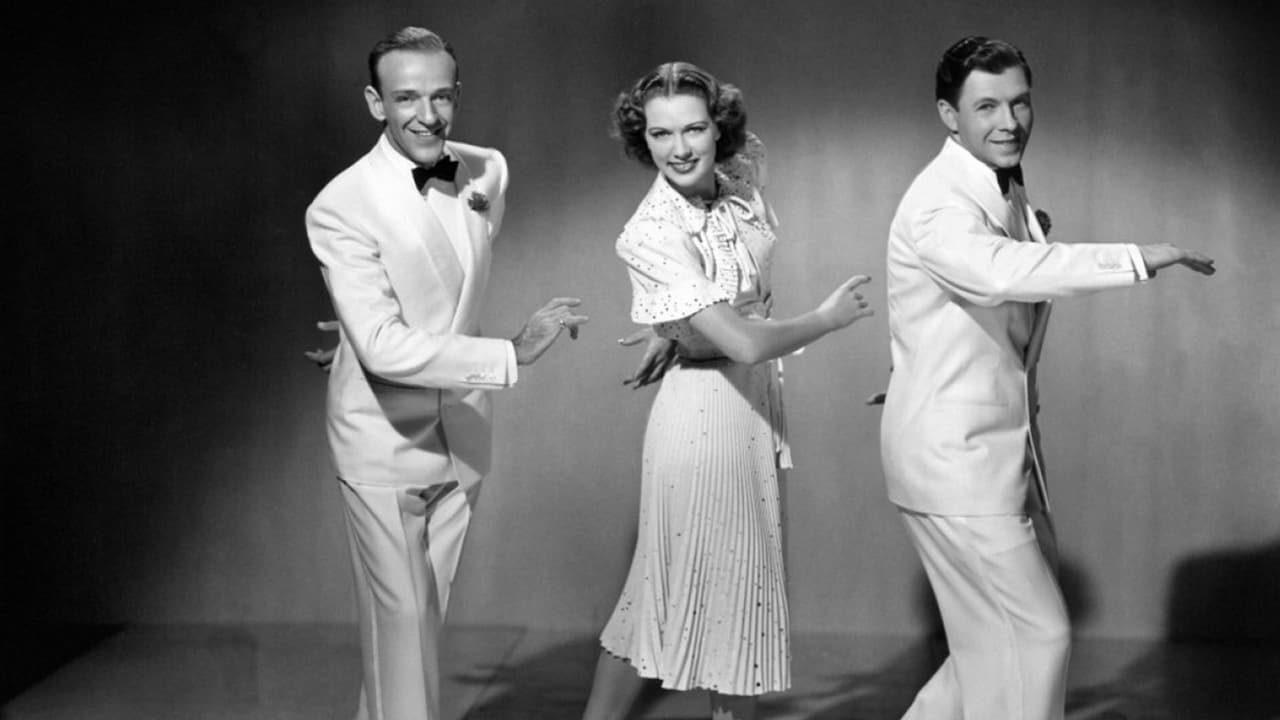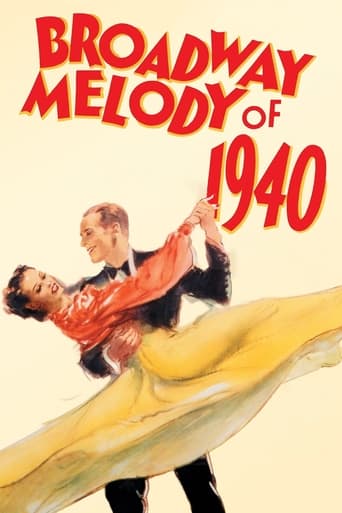

Copyright 9 February 1940 by Loew's Inc. A Metro-Goldwyn-Mayer picture. New York opening at the Capitol: 28 March 1940. U.S. release: 9 February 1940. Australian release: 4 July 1940. 11 reels. 9,144 feet. 101 minutes.SYNOPSIS: Astaire and Murphy play a couple of struggling song-and- dance men in New York. Their act is seen by a big theatrical agent who picks out Astaire to be the dancing partner in his big new show opposite the big star, Powell. Through an accident of mistaken identity Murphy gets the job instead, but by the end this is straightened out and Astaire gets not only the part but, apparently, the girl as well.COMMENT: Fine dancing, good songs, silly story. True, Frank Morgan conjures up a mildly amusing portrait, but the romantic triangle with the principals is not only dull but does them all — particularly Astaire — a distinct disservice. Judicious cutting would certainly help. We're surprised that editor Sewell left in so much rubbishy padding between the musical numbers. Taurog's middle-of-the-road direction lacks any sparkle and finesse that might have lifted the boringly straight script into the realm of passable entertainment. Fortunately, once they put on their dancing shoes, Astaire, Powell and Murphy kick up some suitable storms!This was the last of The Broadway Melody series. It would seem to promise much in the union of Astaire and Powell (with George Murphy thrown in as a bonus) — plus a Cole Porter score — but alas in dancing terms it delivers somewhat less than expected. Too much attention is paid to the trite surrounding story.
... View MoreThis is the fourth and last film in MGM's "Broadway Melody" series, which began back in 1929. I've watched them all (for the first time) recently, and it's interesting to see how they evolved...and without question, this is the most sophisticated...although the two previous films were very entertaining.This is also the only time that Fred Astaire and Eleanor Powell ever appeared in film together. She the top female dancer, he the top male dancer, and they are great together.Here, a friendly...and then not so friendly competition between two friends, both dancers develops. Fred Astaire plays the somewhat more talented dancer, while George Murphy plays the slightly less talented dancer. In a mix-up involving the great Frank Morgan, Murphy gets selected to appear with Eleanor Powell in a big Broadway production over the more talented Astaire. The two partners (Astaire and Murphy) breakup, but can't quite separate. Meanwhile Murphy turns up drunk and unable to perform, and Powell finally realizes that her partner (in both dancing and love) was supposed to be Astaire.Astaire was great. Murphy was very good. What was the difference? Try watching each of them when tap dancing...look at just their feet. Murphy occasionally makes tiny missteps that are hardly noticeable. Astaire is always perfect.Supporting cast members include Ian Hunter as the producer.Two of Cole Porter's best compositions are found here. "I Concentrate on You" is an exceptional song, and is wonderfully sung here by Douglas McPhail and danced by Eleanor Powell and Fred Astaire. And perhaps the best song of all time -- "Begin the Beguine" -- is featured here, with Astaire and Powell dancing to 2 different interpretations in a wonderful routine (although I was not impressed with the vocal by mezzo-soprano Lois Hodnott.It's tough to criticize this film, although MGM made a big mistake here. They considered filming it in Technicolor, which probably would have resulted in it being one of the most remembered of the MGM musicals. But due to the war, they settled for black and white. A shame. For that reason alone, I'm giving it only a very strong "7".
... View MoreFred Astaire (Johnny) and George Murphy (King) have a double act that is going nowhere until Murphy is mistakenly given a break to dance in a show as a leading man to star Eleanor Powell (Clare). Frank Morgan (Casey) is the talent scout who recommends the wrong dancer, Murphy, to show director Ian Hunter (Matthews). Given that this musical stars Astaire and Powell, we spend the film waiting for this pair to come together and do their stuff. And they don't disappoint.Superb technique, quick movement, visually graceful and entertaining to watch ..and that's just George Murphy who is the 3rd best dancer on show! We watch the story unravel but we are really only interested in the musical segments. It is these which elevate my score of the film. The first time Astaire and Powell dance together, we see that they are rivalling one another as demonstrated by their rapport at the end of the sequence. They take turns in giving each other knowing laughs of approval. It's a quality moment. And their finale during Begin the Beguine is an outstanding tap sequence. When George Murphy joins them right at the end for the encore, there is no lapse in the entertainment.I found Frank Morgan irritating at times, Eleanor Powell's mouth has too many teeth and I find it funny how Astaire manages to cut it as a leading man. Who cares, the film has some great dance moments.
... View MoreGreat MGM musical starring Fred Astaire and Eleanor Powell. Astaire plays Johnny Brett, who's part of a dancing team with King Shaw (future U.S. Senator George Murphy). A producer (a very funny Frank Morgan) discovers Johnny and wants to make him the new partner of Clare Bennett (Powell). But Johnny thinks he's a creditor and gives him the name of his partner instead. So, off of this mix-up, King Shaw gets the job as Clare's partner. From there, a series of somewhat predictable things happen, as the movie is a bit formulaic. The movie's strength is not in its plot, however, it's in the musical numbers. Cole Porter songs, Astaire & Powell dancing, and that MGM gloss they seemed to have a patent on make this a must-see film for fans of classic movies.
... View More